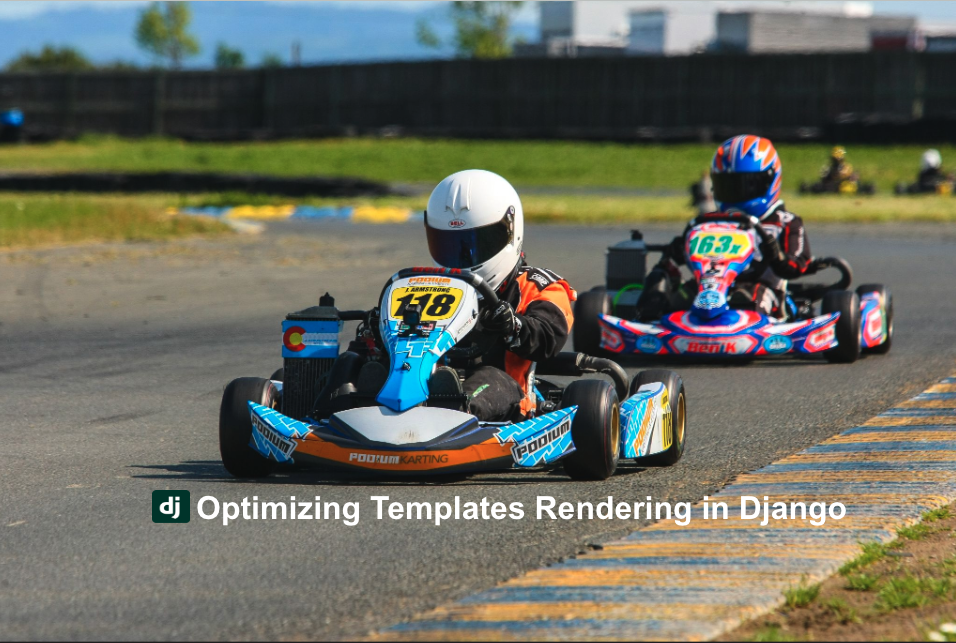Optimizing Templates Rendering in Django
 Imam Hossain Roni
Imam Hossain Roni
Template A convenient way to generate HTML dynamically. A template contains the static parts of the desired HTML output as well as some special syntax describing how dynamic content will be inserted.
Using templates in Django is a 3 steps process:
You have to configure an object of the engine class which will represent the templating engine.
We have to compile the template code into an object of the template class.
We have to render the template with the context. Just notice that there is compilation involved to load dynamic content which can make template rendering much slower.
Rendering templates efficiently is a critical aspect of optimizing the performance of a Django application. Before trying to improve the rendering of our templates we should have a way to look at the current performance status. Let’s find out some tweaks for getting better performance.
Cache: Cache can be the most basic tweak. Caching can significantly improve the performance of your Django application by storing the rendered templates in memory. You can use Django's built-in caching framework to cache templates.
Front-end Optimization: Back-end performance is the one side of this coin, the other one is the front-end. Django sites that can render pages in less than 200ms on the backend but require 7 seconds to load into the browser. It means that the front end also plays an important role in template rendering into the browser.
CSS and JavaScript: Fewer and smaller files are better and they should be cached whenever possible. Libraries like djagno-pipeline, Django compressor and web assets can help to cache CSS and javascript files.
But there’s one thing you should keep in mind is that these libraries include versioning to ensure your visitor’s browsers don’t use stale cached versions. If you choose a Javascript solution, make sure the output is versioned before it lands on your production server or CDN.
Optimizing Images/Thumbnails: Static assets are easy enough to optimize locally via
pngcrushsimilar tools. As part of your thumbnailing process, consider running them through an optimizer likeeasy-thumbnails.Serving static files through CDN: By pushing these assets to CDN, You can let your servers focus on serving dynamic data and leave static files to your CDN or serving dynamic data and leave static files to your CDN or serve static files from the app server. Amazon CloudFront or Cloudflare might be an option for your application.
Upload files with Robust Solution: Uploading files can also be trivial. Once you start adding an app server, this approach becomes problematic. You can use something robust. Uploading files on the app server is the most problematic. You can use something more robust like Amazon S3 or google cloud storage. On a page with 25 thumbnails, these network round-trips add up quickly and kill performance. A two-fold approach can be used to tackle this problem.
Common operations are predefined and done upload.
Tasks are sent to celery to pre-generate and upload those thumbnails in the background.
Feed the templating engine Unicode, not a string: Because Django constrains all variables to Unicode. This doesn’t take too long to do. But if a string variable is being used in many places in your templates it can turn into a noticeable delay.
By following these tips, you can optimize the rendering of templates in your Django application, leading to faster page load times and a better user experience.
Subscribe to my newsletter
Read articles from Imam Hossain Roni directly inside your inbox. Subscribe to the newsletter, and don't miss out.
Written by

Imam Hossain Roni
Imam Hossain Roni
I'm a passionate software engineer with a knack for creating robust and efficient web applications. I thrive on tackling complex problems and crafting elegant solutions. When I'm not coding, you can find me sharing my tech insights on my blog, exploring exciting open-source projects, and staying updated with the latest technologies. What I Do ✨ Writing at Abstract Thoughts 🤔 🐛 Fixing bugs and optimizing code for peak performance 😄 🏢 Currently working remotely as a Software Engineer 🌱 Passionately learning and contributing to Open Source projects